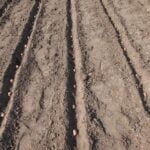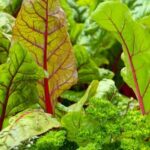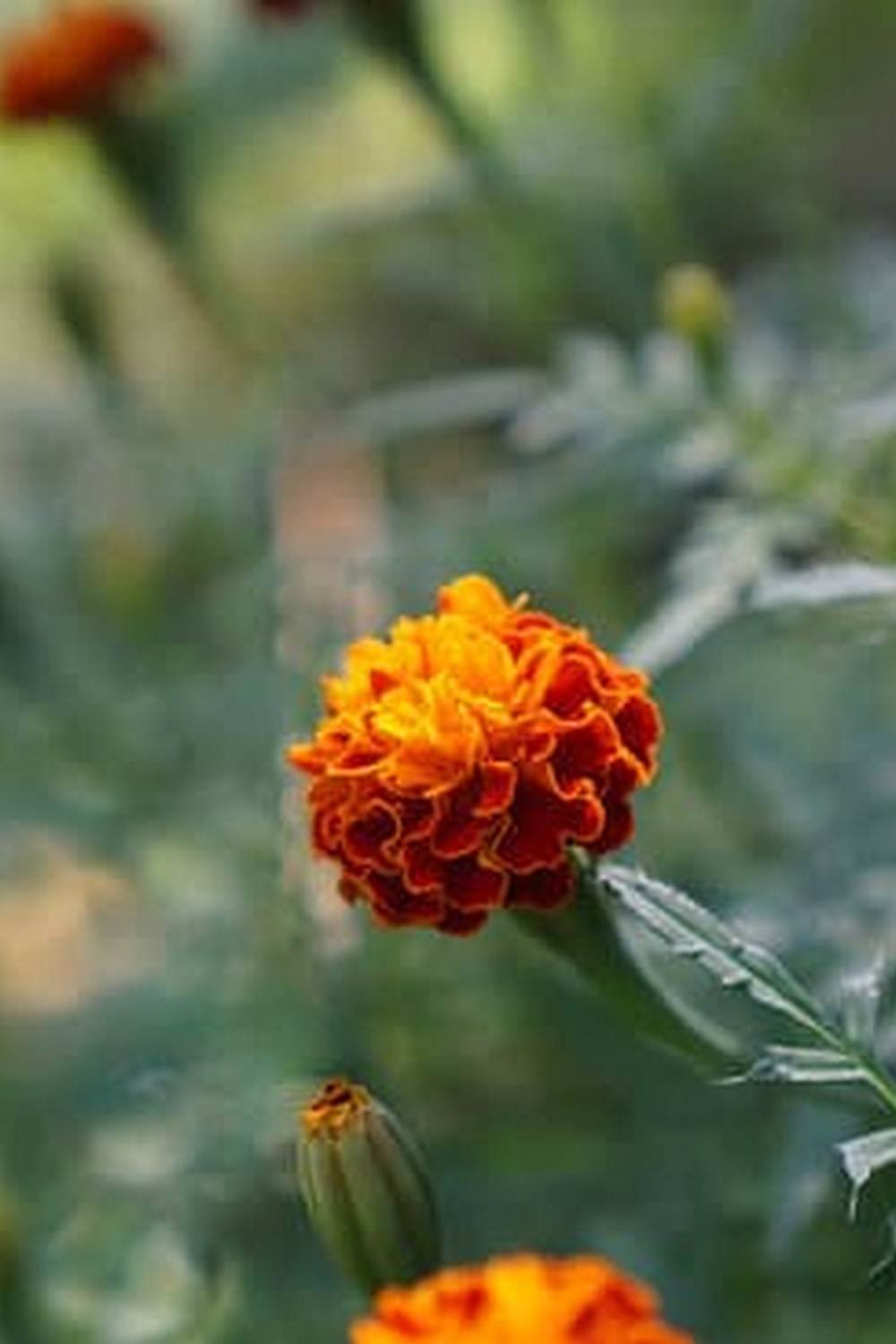Located in the interior of Alaska, Fairbanks poses unique challenges for vegetable gardening. Despite its short growing season and extreme temperatures, with the right knowledge and techniques, it is possible to cultivate a thriving garden in this region. In this article, we will explore the ins and outs of vegetable gardening in Fairbanks, Alaska, providing essential tips and information for both beginners and experienced gardeners.
Fairbanks, known for its cold winters and relatively short summers, presents an interesting opportunity for vegetable gardening enthusiasts. Understanding the specific conditions of this region is crucial to successfully growing a variety of vegetables. From choosing the right plants to preparing the soil and dealing with common pests and diseases, there are several factors to consider when embarking on a vegetable gardening journey in Fairbanks.
In this comprehensive guide, we will delve into the unique growing conditions in Fairbanks and provide valuable insights into selecting suitable vegetables for the climate. Additionally, we will discuss soil preparation, planting techniques, as well as tips for extending the growing season. Whether you are a seasoned gardener or new to vegetable gardening in Fairbanks Alaska, this article will equip you with all the necessary knowledge to cultivate a successful garden in this challenging environment.
Choosing the Right Vegetables for the Fairbanks Climate
When it comes to vegetable gardening in Fairbanks, Alaska, selecting the right vegetables is crucial for a successful harvest. The extreme climate and short growing season in Fairbanks present unique challenges for gardeners. However, by choosing the right vegetables that can thrive in these conditions, you can still enjoy a bountiful garden.
Understanding the Fairbanks Climate
Fairbanks has a subarctic climate characterized by long, cold winters and short, mild summers. The average frost-free growing season typically lasts from late May to early September. Additionally, Fairbanks experiences up to 22 hours of daylight during the summer months, which can affect plant growth and development. These factors must be taken into consideration when selecting vegetables for your garden.
Vegetable Selection for Fairbanks
When choosing vegetables for your Fairbanks garden, opt for cold-hardy varieties that can withstand low temperatures and shorter growing seasons. Some suitable options include root vegetables like carrots, radishes, and potatoes, as well as leafy greens such as lettuce, kale, and spinach. Additionally, crops like peas and beans can also thrive in the Fairbanks climate. It is important to research specific cultivars that are known to perform well in northern climates and have a shorter maturation period.
Considering Season Extension Techniques
In addition to selecting cold-hardy vegetables, you may also consider employing season extension techniques such as using row covers, cold frames, or high tunnels to prolong the growing season in Fairbanks. These methods can help protect plants from frost and extend their growth beyond the typical summer months. By carefully choosing the right vegetables and implementing season extension strategies, you can successfully cultivate a thriving vegetable garden in Fairbanks, Alaska.
Understanding the Unique Growing Conditions in Fairbanks
Fairbanks, Alaska is known for its unique and challenging growing conditions for vegetable gardening. The extreme northern latitude means that Fairbanks experiences long summer days with up to 24 hours of sunlight, but also short growing seasons with cool temperatures. In addition, the region’s cold winters and permafrost present their own set of challenges for gardeners. However, with the right knowledge and preparation, successful vegetable gardening in Fairbanks is possible.
One of the key considerations when understanding the unique growing conditions in Fairbanks is the temperature fluctuations throughout the year. The average frost-free growing season is around 100 days, which means gardeners must maximize their planting time and consider cold-hardy vegetable varieties. Additionally, the region’s strong sunlight can cause overheating in some plants, so providing adequate shade and moisture is essential for their growth.
Another important factor to consider in Fairbanks’ growing conditions is the presence of permafrost. This layer of permanently frozen ground can impact soil drainage and nutrient availability for plants. Gardeners must take steps to amend their soil and create raised beds to address these challenges. Understanding the specific environmental factors at play in Fairbanks is crucial for a successful vegetable garden.
In order to navigate these unique growing conditions effectively, it is important for vegetable gardeners in Fairbanks to gather information from local experts and resources. Joining a gardening club or attending workshops specific to vegetable gardening in Fairbanks can provide valuable insights and tips from experienced individuals who understand the challenges of growing vegetables in this region.
It’s also helpful to connect with other local gardeners to share experiences and learn from each other’s successes and failures when it comes to achieving a thriving vegetable garden in Fairbanks, Alaska.
- Plant cold-hardy vegetables such as kale, carrots, potatoes, and radishes
- Utilize protective measures like row covers or hoop houses to extend the growing season
- Consider integrating companion planting techniques to maximize space and deter pests
Preparing the Soil for Vegetable Gardening in Fairbanks
When it comes to vegetable gardening in Fairbanks, one of the most crucial steps is preparing the soil. Due to the unique climate and growing conditions in Fairbanks, proper soil preparation is essential for a successful harvest. The extreme cold temperatures and short growing season present challenges that gardeners must be prepared for.
The first step in preparing the soil for vegetable gardening in Fairbanks is to assess its quality. Understanding the composition of the soil, its pH levels, and nutrient content will help determine what amendments are needed. Fairbanks soil is known for being acidic, so adding lime to raise the pH may be necessary for optimal plant growth.
In addition to addressing pH levels, incorporating organic matter into the soil is vital. Compost, well-rotted manure, or other organic materials can improve soil structure and fertility. This will provide essential nutrients for the vegetables and help with water retention in the dry Fairbanks climate.
| Soil Preparation Steps | Details |
|---|---|
| Assess Soil Quality | Determine pH levels and nutrient content of the soil to identify necessary amendments. |
| Addressing Soil Acidity | Add lime to raise pH levels due to naturally acidic Fairbanks soil. |
| Incorporate Organic Matter | Add compost or well-rotted manure to improve soil structure and fertility. |
Best Practices for Planting and Maintaining Vegetables in Fairbanks
Vegetable gardening in Fairbanks, Alaska presents unique challenges due to its short growing season and extreme temperatures. However, with the right knowledge and techniques, it is definitely possible to have a successful garden in this region. When it comes to planting and maintaining vegetables in Fairbanks, there are several best practices that can help ensure a bountiful harvest.
One of the most important factors to consider when planting vegetables in Fairbanks is timing. Due to the short growing season, it’s crucial to start seeds indoors or use transplants to get a head start on the growing season. Planning and preparing your garden early will give your vegetables the best chance of thriving in the limited time available for growth.
In addition to timing, choosing the right varieties of vegetables is essential for success in Fairbanks. Cold-hardy and quick-maturing varieties are ideal for this climate. Look for vegetables such as kale, spinach, carrots, radishes, and potatoes that can withstand cooler temperatures and have a shorter time to maturity. Proper spacing and adequate sunlight are also crucial for healthy plant growth in Fairbanks’ unique conditions.
It’s also important to pay close attention to watering and soil fertility when maintaining a vegetable garden in Fairbanks. The dry air and intense sunlight can quickly dry out soil, so regular watering is essential. Additionally, amending the soil with organic matter such as compost or well-rotted manure can improve its structure and fertility, ensuring that your vegetables have access to the necessary nutrients for optimal growth.
| Best Practices | Details |
|---|---|
| Timing | Start seeds indoors or use transplants; plan and prepare the garden early |
| Choosing Varieties | Select cold-hardy and quick-maturing varieties such as kale, spinach, carrots, radishes, and potatoes; ensure proper spacing and sunlight |
| Watering & Soil Fertility | Regular watering is essential due to dry air; amend soil with organic matter like compost or manure for improved fertility |
Dealing With Common Pests and Diseases in Fairbanks
Fairbanks, Alaska’s unique climate and growing conditions present both advantages and challenges for vegetable gardening. While the short growing season and cold temperatures can make it difficult to cultivate certain crops, Fairbanks also benefits from long summer days with almost continuous sunlight, which can be ideal for vegetable growth. However, with any type of gardening, there are common pests and diseases that vegetable gardeners in Fairbanks need to be aware of and prepared to deal with.
One of the most common pests that vegetable gardeners in Fairbanks may encounter is the cabbage looper. These green caterpillars can quickly decimate cabbage, kale, and other leafy greens if not properly controlled. To combat this pest, consider using row covers to protect your plants or applying organic pesticides such as Bacillus thuringiensis (Bt) to eliminate the cabbage looper larvae.
Another potential pest is the aphid, which can infest a wide variety of vegetables including tomatoes, peppers, and lettuce. To deter aphids from your garden, consider interplanting with flowers like marigolds that repel these destructive insects. Ladybugs are also natural predators of aphids and can help keep their populations in check.
In addition to pests, vegetable gardeners in Fairbanks must also be vigilant about preventing diseases such as powdery mildew on cucumbers and zucchini or late blight on tomatoes and potatoes. For powdery mildew prevention, ensure proper air circulation by spacing plants adequately and avoiding overhead watering.
To prevent late blight, choose disease-resistant varieties when possible and avoid wetting plant leaves during irrigation. By staying informed about common pests and diseases in Fairbanks and implementing proactive measures against them, vegetable gardeners can maximize their chances of a successful harvest.
Tips for Extending the Growing Season in Fairbanks
Extending the growing season in Fairbanks can be a challenge due to its short growing season and harsh climate. However, with the right techniques and equipment, it is possible to prolong the time you have to grow vegetables in this region. Here are some tips for extending the growing season in Fairbanks:
Utilize Cold Frames and Greenhouses
One of the most effective ways to extend the growing season in Fairbanks is by using cold frames and greenhouses. These structures can provide protection from frost and allow you to start planting earlier in the spring and continue harvesting later into the fall. Cold frames are relatively simple to construct and can be used to shelter small plots of vegetables, while greenhouses offer more space and a controlled environment for a wider variety of crops.
Install Row Covers
Row covers are lightweight fabric blankets that can be draped over rows of crops to protect them from frost and wind. They act as insulation, trapping heat around the plants while still allowing sunlight, air, and water to reach them. Row covers can add a few weeks to both ends of the growing season, making them a valuable tool for vegetable gardening in Fairbanks Alaska.
Choose Cold-Tolerant Varieties
When selecting which vegetables to grow in Fairbanks, prioritize varieties that are well-suited for cold climates. Look for vegetables that have been bred specifically for northern regions or ones that have shorter maturity dates. Some examples of cold-tolerant vegetables include kale, spinach, carrots, radishes, and certain types of lettuce. By choosing these varieties, you will have better success at extending your growing season in Fairbanks.
By implementing these tips for extending the growing season in Fairbanks Alaska, vegetable gardeners can make the most of their limited time for cultivating crops in this challenging climate. With careful planning and use of appropriate techniques and resources, it is possible to enjoy fresh produce from your garden for an extended period throughout the year.
Harvesting and Preserving Your Vegetable Garden in Fairbanks
When it comes to vegetable gardening in Fairbanks, Alaska, harvesting and preserving your crops is a crucial part of the process. Due to the short growing season and harsh climate, maximizing the yield from your garden and making sure that you can enjoy its produce year-round is essential. Here are some tips for harvesting and preserving your vegetable garden in Fairbanks.
Harvesting your vegetables at the right time is key to ensuring their quality and flavor. In Fairbanks, where the growing season is brief, it’s important to keep a close eye on your crops and harvest them as soon as they reach peak ripeness. This may require regular monitoring and frequent harvesting, especially during the peak summer months when vegetables tend to mature quickly.
Once you have harvested your vegetables, it’s important to preserve them for long-term enjoyment. Canning, freezing, and pickling are popular methods of preserving vegetables in Fairbanks. Canning allows you to store your vegetables in jars at room temperature for an extended period, while freezing them ensures that they retain their texture and flavor. Pickling is another great option for preserving vegetables such as cucumbers, beets, and green beans, adding a delightful tangy flavor to your harvest.
By taking the time to properly harvest and preserve your vegetable garden in Fairbanks, you can savor the fruits of your labor throughout the year, even when the ground is covered with snow. With proper planning and preservation techniques, you can enjoy a bountiful supply of homegrown vegetables regardless of the challenges posed by the Alaskan climate.
Community Resources and Support for Vegetable Gardeners in Fairbanks
In conclusion, vegetable gardening in Fairbanks, Alaska presents its own unique set of challenges and opportunities. With the right knowledge and preparation, residents can enjoy a successful and bountiful garden despite the harsh climate. By choosing the right vegetables, understanding the growing conditions, preparing the soil, implementing best practices for planting and maintenance, and utilizing community resources and support, gardeners can overcome obstacles and thrive in their gardening endeavors.
One of the key factors in successful vegetable gardening in Fairbanks is being aware of the community resources and support available. Whether it’s joining a local gardening club or cooperative extension program, attending workshops or classes, or seeking advice from experienced gardeners in the area, tapping into these resources can provide valuable guidance and assistance.
Additionally, participating in community gardens or sharing seeds and produce with neighbors can foster a sense of camaraderie while also enhancing one’s gardening experience.
Furthermore, as vegetable gardening continues to grow in popularity in Fairbanks, there are increasing opportunities for collaboration and learning within the community. By taking advantage of these resources and support systems, gardeners can not only enhance their own skills but also contribute to the overall success of vegetable gardening in Fairbanks. With dedication and perseverance, individuals can create thriving gardens that not only offer fresh produce but also contribute to a stronger sense of community within Fairbanks.
Frequently Asked Questions
Can You Grow a Garden in Fairbanks Alaska?
Yes, it is possible to grow a garden in Fairbanks, Alaska despite its challenging climate. Gardeners in Fairbanks typically utilize techniques such as raised beds, greenhouses, and cold frames to extend the growing season.
What Veggies Grow Best in Alaska?
Some of the vegetables that grow best in Alaska’s climate include root vegetables like potatoes and carrots, leafy greens such as kale and spinach, as well as cold-hardy crops like broccoli, cabbage, and Brussels sprouts. These vegetables tend to thrive in the cooler temperatures and shorter growing season.
What Plants Are in Fairbanks Alaska?
Fairbanks, Alaska is home to a variety of native plants including dwarf birch, willows, alder trees, fireweed, lupine, and yarrow. The region also boasts wild berries such as blueberries, cranberries, and raspberries. These native plants have adapted to the harsh Alaskan environment and play an important role in the local ecosystem.

If you’re looking to get into vegetable gardening, or are just looking for some tips on how to make your current garden better, then you’ve come to the right place! My name is Ethel and I have been gardening for years. In this blog, I’m going to share with you some of my best tips on how to create a successful vegetable garden.





